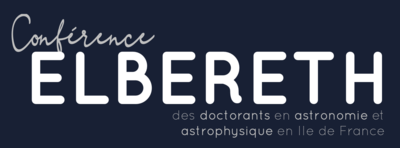Orateur
Description
The Quasi-Thermal Noise (QTN) spectroscopy is an efficient tool to study, in the frequency domain, the fluctuations due to the thermal motion of the charged particles in a plasma that surrounds a passive antenna. This noise is ubiquitous, and most of the time, is dominant around the electronic plasma frequency. The voltage power spectrum of the electrostatic fluctuations depends on the velocity distribution of the electrons $f_e(\vec v)$, in addition to the antenna response. The shape of the QTN in a weakly magnetized plasma allows one to yield an accurate diagnostic of the electron properties such as the total electron density $n_e$ and core temperature $T_c$, which allows one to analyze the electronic populations in the solar wind with great precision.
We will present a semi-automatic method, based on the simplified sQTN from Moncuquet et al. 2020 to determine the density and a proxy of the core temperature of the electrons. The method has been applied on the 19 first Encounters of Parker Solar Probe (PSP), during biased and non biased mode, on the voltage power spectrum measured with both dipole of PSP V1V2 and V3V4.
We present the large-scale structure of the solar wind down to 11 $R_{\bigodot}$ and discuss on the radial variations of the electron density and temperature. Finally, we discuss on the implementation of a full fitting to deduce the suprathermal electron properties.
| Astrophysics Field | Solar Wind, Instrumentation, |
|---|

